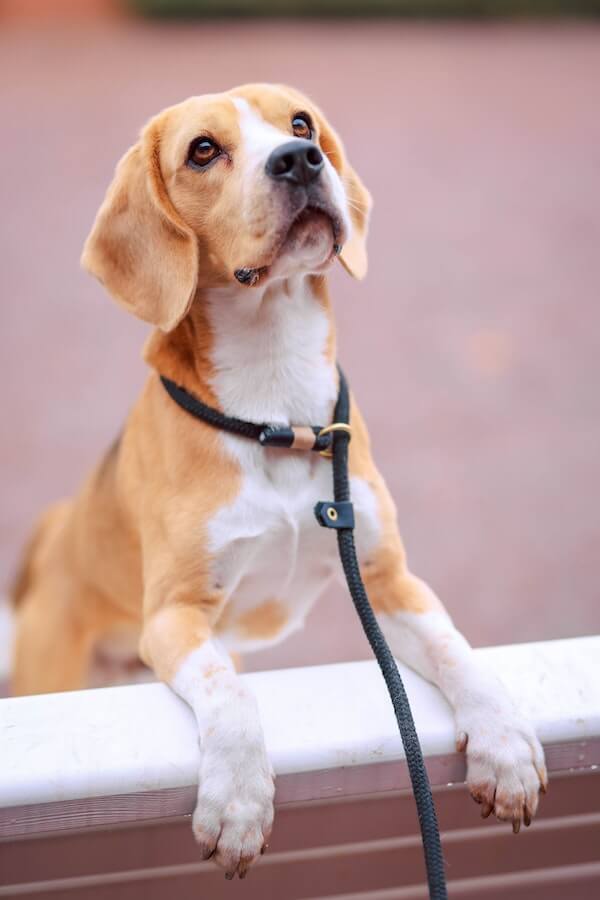
When it comes to picking a pup, there are some breeds that you should think twice about if you’re looking for an easy trainee. That is when certain breeds of dogs that are hard to train come in the picture.
Each breed has its own unique characteristics and temperament, so if your goal is to have a well-trained companion, choosing wisely is key.
After all, when it comes to the phrase “you can’t teach an old dog new tricks,” we certainly don’t want to be caught in that boat! Some of the harder-to-train breeds include Bull Terriers, Chow Chows, and Huskies.
None of these feisty furballs were made with obedience in mind – they were bred to hunt or as companion animals and their independent streak can be a challenge to train.
Training these breeds may require more patience than other breeds, but with the right approach, they can still become loyal and well-behaved pooches.
So if you’re up for the challenge, read on to learn more about some of the hardest dogs to train.
Are some dogs harder to train than others?
Yes, some dogs can be more difficult to train than others. Depending on breed and family history, certain dogs may possess a higher level of energy or have been raised in an environment that doesn’t promote learning good behaviors.
Although some dogs may require more effort than others when it comes to training, this doesn’t mean they are any less capable of picking up cues and understanding what is expected of them.
With the right amount of patience, consistency, and positive reinforcement, any pup can be a star pupil!
10 dogs that are hard to train
Training your dog can be a huge challenge – but some breeds come with more of an uphill battle than others.
From high energy to stubborn personalities, these 10 dog breeds may require extra patience and dedication from their owner if they are to become well-behaved pupsters.
While it’s always possible to train any breed, these particular canine companions have inherent qualities that make training them a bit harder. Here’s the lowdown on 10 dogs that are hard to train – now you can decide whether or not you’re up for the challenge!
1. Siberian Husky:
These intelligent, independent-minded dogs are notoriously difficult to train.
Their strong will and high energy levels make it hard for owners to maintain consistent, firm discipline – so Siberian Huskies may require an even more dedicated training program than other breeds.
2. Rottweilers:
Though they are loyal and devoted to their owners, Rottweilers can be aggressive if not trained properly.
They require early socialization with other animals and people for successful training, so it’s important to invest in quality classes or lessons if you plan on taking home a Rottie.
3. Afghan Hounds:

This breed is known for their stubbornness and independence. Afghan hounds are notoriously difficult to train, largely because they often don’t respond well to basic commands or corrections.
They may require additional patience and a creative approach to training if you’re looking for successful results.
4. Bullmastiff:
Though these gentle giants can be quite loyal, they tend to be obstinate and slow-moving when it comes to learning new behaviors.
If you decide on a Bullmastiff as your pupster, make sure you invest in quality training classes that help them learn quickly and effectively.
5. Australian Cattle Dog:
These active, intelligent dogs require an experienced trainer with a lot of patience. Australian Cattle
Dogs respond better to positive reinforcement and consistent routines, so make sure you have both in place before starting the training process.
6. Beagle:

These small but mighty dogs have strong personalities – which can make them hard to train!
Beagles are incredibly smart, so they may try to outsmart their owners when it comes to commands and corrections. It’s important to stay firm yet patient with your training so that your pup gets the message.
7. Basset Hound:
This laid-back breed is often difficult to motivate when it comes to learning new behaviors.
Basset Hounds can be stubborn and independent, so it’s important to stay on top of their just-right amount of training sessions if you want your pupster to learn quickly and effectively.
8. Chinese Shar-Pei:
This fiercely loyal breed of dog tends to be a bit more challenging when it comes to training.
They are independent by nature, and may not respond well to overly aggressive or forceful corrections.
Patience and positive reinforcement are key when training a Chinese Shar-Pei – it’s all about finding the right balance of reinforcement and consistency.
9. Chow chow:

This independent-minded breed can be quite headstrong and challenging to train. Chow Chows often test the limits of their owners, so it’s important to stay firm but patient with them when it comes to commands and corrections.
It may take a bit longer for your pupster to learn – but patience and dedication are surefire ways to help them succeed in training.
10. Dachshund:
Though they’re small in stature, these little dogs have big personalities – which makes teaching them basic obedience a challenge!
They are highly intelligent, so they may try to outsmart their owners during training. However, by remaining consistent and reinforcing positive behaviors, you can turn your daring dachshund into an obedient pupster.
How to train a difficult dog

Training a difficult dog might seem like an impossible task, but with the right approach and a few simple tips you can help your pup become a well-mannered member of the family in no time.
Here are five easy tips to get you started on training your furry friend:
1. Establish yourself as the leader:
Dogs respond best when they have someone to look up to – so establish yourself as the alpha in their eyes. Make sure that all commands come from you and no one else.
2. Keep sessions short and sweet:
Difficult dogs tend to have shorter attention spans, so keep training sessions fun and brief (around 10 minutes is optimal).
3. Praise often:
Positive reinforcement is key! Every time your pup demonstrates good behavior, reward them with praise and treats.
4. Set clear boundaries:
To help your dog adjust to a structured environment, make sure that you set very specific rules for acceptable behavior in the house. Be consistent when enforcing these guidelines – as this will help to build trust between you and your pet.
5. Consistency is key!
Just like humans, dogs thrive in an environment where they know what is expected of them. Make sure that you are always consistent with commands and rewards – so that they can learn quickly and effectively!
Conclusion
Though some dogs are hard to train than others, the key takeaway from all this is that no matter which breed of dog you have, effective training requires a lot of patience and consistency.
So whether it’s a Basset Hound or a Chinese Shar-Pei – make sure you’re up to the challenge before bringing your new pup home!
With enough time, love, and dedication – even the most challenging dogs will learn the ropes in no time. Good luck!


GIPHY App Key not set. Please check settings